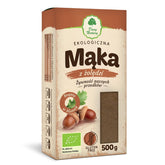Milk thistle – properties, uses, side effects
Contents:
- Milk thistle and its properties
- Milk thistle – how to use it in your daily diet
- Milk thistle – side effects of excessive use
Although it appears to be just an ordinary herb, milk thistle is rich in valuable substances for the human body. Not only is it recommended for the prevention of liver and digestive system diseases, but it also contains a high dose of antioxidants and valuable fatty acids. Learn why this natural dietary supplement is still worth taking.
Milk thistle and its properties
The milk thistle is characterized by purple inflorescences and pointed leaves with small thorns. It's especially worth seeking out milk thistle in wild meadows, but not only there. Due to the wealth of valuable compounds found in its fruits, Silybum marianum is currently a cultivated plant that enjoys unbroken popularity due to its medicinal properties.
Milk thistle is characterized by its high content of essential oils, plant sterols, unsaturated fatty acids (including linoleic acid) and fat-soluble vitamin E – known to protect cells from free radicals.
However, milk thistle owes its properties primarily to the antioxidant complex it contains, collectively known as silymarin. This substance is particularly valued for its positive effects on the condition of the liver and the smooth functioning of the entire digestive system, because:
- helps in the regeneration of liver cells (e.g. by strengthening the cell walls),
- supports the natural cleansing of the body from toxins,
- relaxes smooth muscles,
- has an anti-inflammatory effect,
- stimulates the production of bile, gastric juices and digestive enzymes.
Milk thistle – how to use it in your daily diet
As a dietary supplement, milk thistle is used to stimulate the renewal of liver cells (hepatocytes), which helps protect the organ from damage and supports its regeneration. For this reason, milk thistle should be included in the diet of people whose livers are particularly susceptible to damage, e.g., due to medication.
How do you use milk thistle ? There are several ways to do this. This raw material is commercially available in various forms, including:
- Ground seeds – which can be used to sprinkle on meals or to prepare an infusion; you can consume about two heaped teaspoons of ground seeds throughout the day,
- Oil – it is best to choose unrefined oil, which has a slightly bitter taste, and add it to salads, dips, sauces and cold dishes (up to a few teaspoons per day),
- Dietary supplements in capsules, tablets and drops – which we use according to the manufacturer’s recommendations.
When it comes to dietary supplements, it's worth choosing products with high-quality, standardized milk thistle fruit extract and paying attention to the silymarin content stated by the manufacturer. The higher this value, the more intense the effect of a particular supplement.
Milk thistle – side effects of excessive use
Milk thistle rarely causes side effects, but that doesn't mean it can be used without restrictions. Moderation is recommended. Taking too much milk thistle at once may cause indigestion or digestive upset.
However, preparations containing milk thistle fruit extract are well tolerated by adults. A contraindication to their use is, of course, an allergy to plants from the daisy family. This dietary supplement should not be included in the diet of children under 12 years of age or pregnant women.
THE PUBLISHER'S CHOICE
Dried plums 1 kg BIOGO
- £6.08
- £6.08
- Unit price
- / per
Dried White Mulberries 500 g ORGANIC
- £5.07
- £5.07
- Unit price
- / per
Almonds 1 kg BIOGO
- £10.15
- £10.15
- Unit price
- / per
Cranberries sweetened with apple juice organic 1 kg BIOGO
- £14.21
- £14.21
- Unit price
- / per
Dried dates 1 kg BIOGO
- £3.65
- £3.65
- Unit price
- / per
Unpeeled buckwheat groats 1 kg BIOGO
- £2.44
- £2.44
- Unit price
- / per
Walnuts 800 g BIOGO
- £7.51
- £7.51
- Unit price
- / per
Peeled sunflower seeds 1 kg BIOGO
- £2.64
- £2.64
- Unit price
- / per
PULLED ORGANIC SUNFLOWER SEEDS 1 KG BIOGO
- £3.85
- £3.85
- Unit price
- / per












































































































































